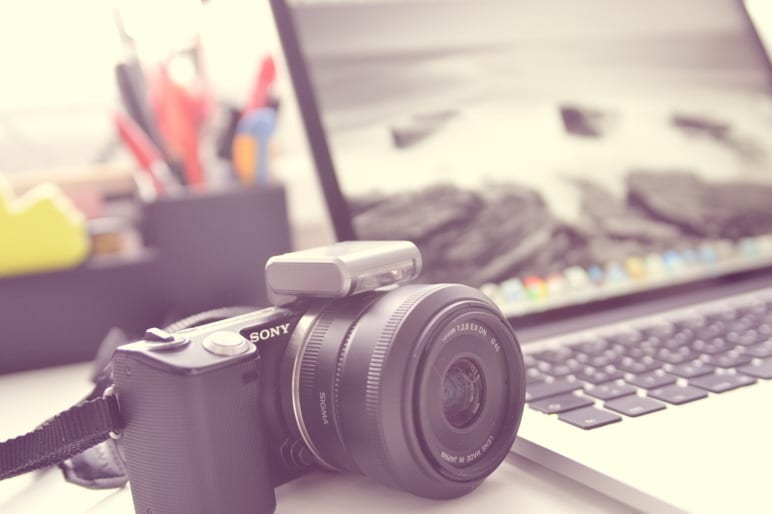A Quick Guide to Photo Editing for Beginners

Photo editing is an essential part of photography. It allows you to enhance the quality of your images, correct any mistakes, and make them look more appealing.
Photography is about how to preserve memories you’re interested in and enhancing the image. There are many ways to make basic edits on a photo without using advanced features.
Read on for some tips and tricks on photo editing for beginners!
Choosing the Right Software
The first step in photo editing basics is to choose the right software. Many photo editing tools are available, and choosing the right one can be daunting. Some popular options include Adobe Express, Photoshop, Lightroom, and more.
As a beginner, it’s recommended to start with free software. These tools offer basic editing capabilities and are easy to use.
Adjusting Exposure
Exposure refers to the brightness of an image. If an image is underexposed, it means that it’s too dark. Conversely, if an image is overexposed, it’s too bright.
Adjusting the exposure is one of the essential photo editing tips you should know. Most photo editing software offers a tool for adjusting exposure. You can use it to make your image brighter or darker as needed.
Adjusting Contrast
Contrast refers to the difference between an image’s lightest and darkest areas. Increasing contrast doesn’t need advanced photo editing skills. However, it’s a great way to make an image appear more vivid.
Reducing contrast can create a more muted effect if that’s what you want. The contrast can be adjusted with a simple slider tool in most photo editing tools.
Adjusting Color
Color adjustments can make a significant difference in the look of your image. It’s one of the best editing ideas to help adjust an image’s color temperature, saturation, and hue.
The warmth and coolness of an image are the color temperature. Saturation is the intensity of the colors, and hue refers to the actual color itself. Adjusting these settings can help you create the desired look for your image.
Using Filters
Filters are pre-made settings that can be applied to an image to achieve a particular look or effect. They’re an easy way to add some creativity to your pictures. Most photo editing software comes with a range of filters you can apply with just one click!
Cropping and Resizing
Cropping helps remove unwanted parts of an image. It’s best to learn how to crop a picture to improve composition and focus on the main subject of your image.
Resizing, on the other hand, is the process of changing the size of an image. It can be helpful when you want to share your image on social media or email it to someone. Most photo editing software offers a cropping and resizing tool.
Use This Guide on Photo Editing for Beginners
Photo editing for beginners can seem daunting, but it doesn’t have to be. Edit your images like a pro with the right software and a few basic techniques.
Remember, photo editing is subjective, and there’s no right or wrong way to do it. It’s all about finding the look that works best for you.
Photo editing while protecting the environment
Photography is an art form that has become increasingly popular with the rise of digital technology. It has allowed anyone with a camera to capture and share their experiences, and has given rise to a new industry of photographers, both amateur and professional. With the advent of digital photography, photo editing has become an essential tool for any photographer.
However, photo editing has its drawbacks, and the impact on the environment is one of them. In this article, we will explore the various ways photo editing can be done while protecting the environment.
Use energy-efficient hardware
The first step in photo editing while protecting the environment is to use energy-efficient hardware. Most photo editing software requires a lot of processing power, and this can have a significant impact on your electricity bills and carbon footprint. Investing in energy-efficient hardware, such as laptops with long battery life, can help reduce your energy consumption while editing photos.
Use eco-friendly photo editing software
Another way to protect the environment while photo editing is to use eco-friendly photo editing software. Many photo editing software companies are now committed to reducing their carbon footprint and are developing software that is eco-friendly. For example, some software companies use renewable energy to power their data centers and reduce their carbon emissions.
Use natural light
Natural light is the most eco-friendly source of light available. Using natural light while photo editing can help reduce your carbon footprint and save you money on your electricity bills. You can set up your workspace near a window and take advantage of the natural light during the day. If you must edit photos at night, consider using energy-efficient light bulbs that use less energy and emit less carbon.
Use eco-friendly accessories
When editing photos, many photographers use accessories such as mousepads, keyboards, and monitor stands. Using eco-friendly accessories, such as those made from sustainable materials, can help reduce your carbon footprint. For example, you can use a bamboo keyboard and mousepad instead of a plastic one.
Print photos on eco-friendly paper
If you plan on printing your photos, consider using eco-friendly paper. Many paper companies now offer recycled and sustainable paper options that are made from sustainable sources. Using eco-friendly paper can help reduce the amount of waste that ends up in landfills and reduce your carbon footprint.
Use virtual assistants
Virtual assistants are a great way to reduce your workload and save time while photo editing. By using virtual assistants, you can delegate tasks such as photo organization, keyword tagging, and basic editing tasks to a professional photo editor. This can help you focus on more creative tasks and reduce the amount of time and energy you spend on photo editing.
Recycle electronics
One of the biggest environmental concerns associated with photo editing is the disposal of electronics. Electronic waste is a significant problem that contributes to landfills and pollutes the environment. When it’s time to upgrade your hardware, consider donating or recycling your old electronics. Many electronics retailers now offer recycling programs that can help you dispose of your old electronics safely and responsibly.
Conclusion
In conclusion, photo editing is an essential tool for any photographer, but it’s essential to use eco-friendly practices while doing so. By using energy-efficient hardware, eco-friendly software, natural light, eco-friendly accessories, and virtual assistants, photographers can reduce their carbon footprint and protect the environment.
Additionally, using eco-friendly paper and recycling electronics can help reduce waste and pollution. By adopting these practices, photographers can enjoy the benefits of photo editing while preserving the planet for future generations.
If you’re looking for more helpful content, check out our blog. We’ve got more helpful tips and tricks for you to check out.







